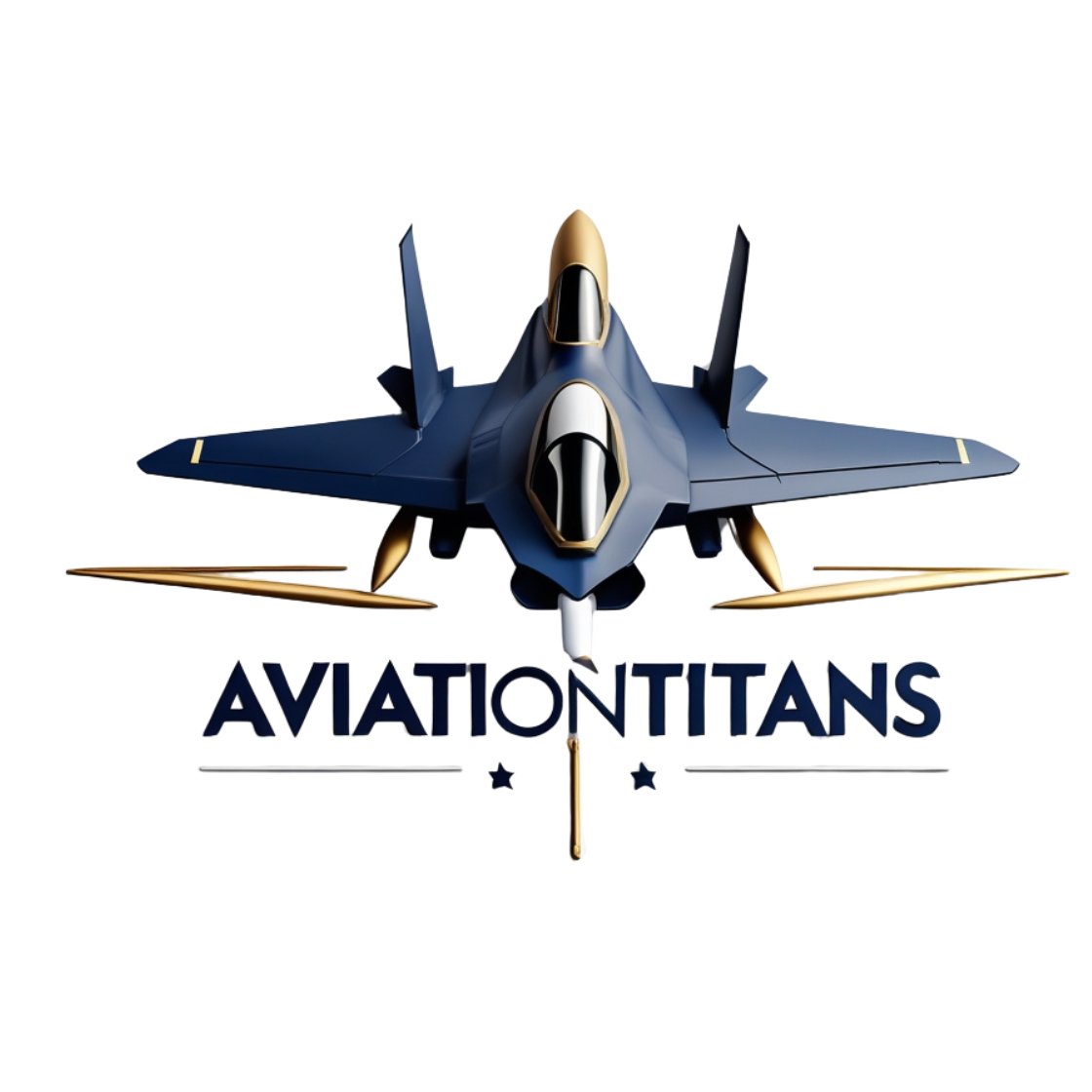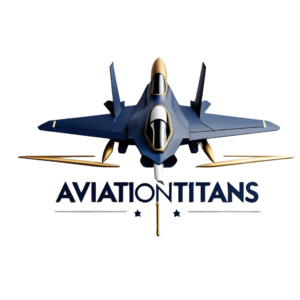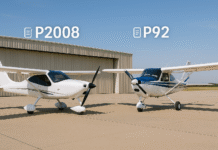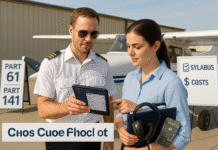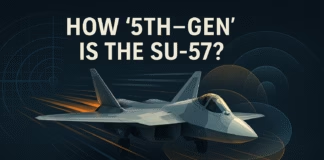First-solo jitters are normal. Every pilot remembers that tight-chest feeling before rolling onto the centerline alone. The goal isn’t to erase fear—it’s to channel it into focus. Below is a practical, CFI-backed plan you can use to prepare, brief, and fly your first solo with calm confidence. It includes checklists, mental techniques, and trusted resources you can verify and study.
Quick trust anchors (official resources):
- FAA Airplane Flying Handbook (AFH) for techniques and pattern work: faa.gov/regulations_policies/handbooks_manuals/aviation/airplane_flying_handbook
- Pre-solo training requirements in 14 CFR §61.87: ecfr.gov…/section-61.87
- FAA Pilot’s Handbook of Aeronautical Knowledge (PHAK) for IMSAFE and risk management: faa.gov/…/pilots_handbook
- AOPA Learn to Fly hub (student pilot tips): aopa.org/training-and-safety/learn-to-fly
- FAA Safety Team (free safety seminars): faasafety.gov
Helpful internal reads on AviationTitans:
- Flight school planning & checkrides: Flight School Guides
- Sim time that actually helps: Simulator Technology
- Confidence builders & endorsements: Advanced Skills & Endorsements
- Have a question for a pro? Captain’s Corner: Ask the Pilot
Why first-solo fear shows up—and why that’s good
Fear spikes because the risk feels new and your brain wants certainty. That same activation sharpens attention and keeps you methodical. We don’t eliminate nerves; we use procedures, standards, and repetition to convert emotion into disciplined action. Your tools: skill proof (demonstrated proficiency), clear gates (go/no-go), and a calm, repeatable routine.
Know the standards (so your brain can relax)
Your CFI endorses you only after you meet the solo requirements in 14 CFR §61.87, including demonstrated proficiency, a pre-solo knowledge test, and endorsements specific to airport(s) and make/model. When you understand these requirements and how you’ve already met them, anxiety drops—because you’re not “hoping,” you’re complying. Review: §61.87.
The CFI-backed readiness checklist
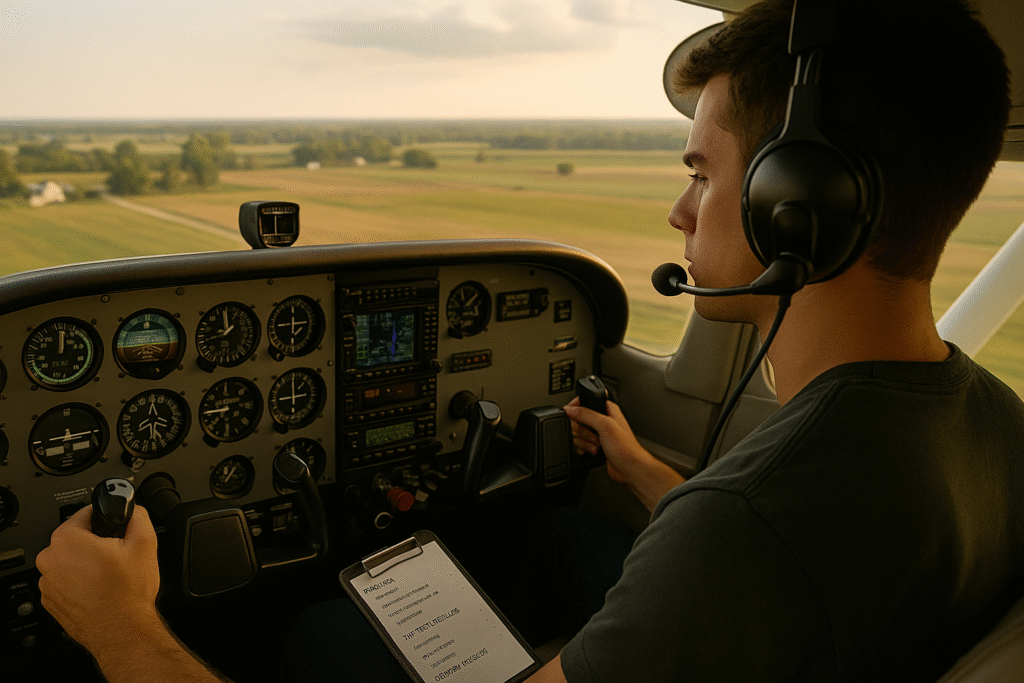
Use this the week before your solo. Tick every box honestly.
Aircraft handling
- Consistent normal/short-field takeoffs and landings
- Crosswind corrections held through rollout
- Go-around on command with clean procedure
- Stabilized approach gates (e.g., on speed, on centerline, proper glidepath by 500–700’ AGL in the pattern)
Procedures & knowledge
- Before-takeoff and before-landing checks by flow and checklist
- Emergency actions (engine failure on takeoff, in the pattern, and in the practice area) from memory items to checklist
- Radio phraseology with confidence; know CTAF vs. tower differences
- Airport knowledge (pattern, noise abatement, hot spots, runway lengths, displaced thresholds, and go-around escapes)
Risk management
- Personal minima for winds/gusts, crosswind, visibility, and ceiling (agree these with your CFI)
- IMSAFE self-check (Illness, Medication, Stress, Alcohol, Fatigue, Emotion) per FAA PHAK: PHAK
If any item feels shaky, that’s not failure—it’s a training task. Fix it with one or two short, focused lessons.
10 steps to turn nerves into performance
- Chair-fly the entire sortie
Sit with a printed airport diagram and run through taxi, run-up, takeoff, crosswind, downwind, base, final, and go-around. Say flows and callouts out loud (yes, really). - Rehearse the first two minutes
Anxiety peaks at brake release. Visualize centerline hold, heels on the floor, power smoothly to takeoff setting, maintain right rudder, rotate at Vr, pitch to Vx/Vy, and track runway heading. - Write a three-line mission card
- Weather & winds (including crosswind component)
- Pattern/obstacles notes (e.g., “upwind to 700’ AGL before crosswind”)
- Go-around triggers (“unstable by base, any doubt—go around”)
- Define your aborts and go-around gates
Decide them before you taxi:- Rejected takeoff: below 30–40 KIAS and not developing power or directional control—idle, brakes, centerline.
- After rotation: insufficient climb, abnormal sounds—pitch for best glide, checklist memory items, land ahead or shallow turns as briefed with CFI.
- Approach: if not stabilized by your gate—go around. No debate.
- Use a breathing pattern that works
Two cycles of inhale 4 seconds / exhale 6 seconds will lower heart rate and sharpen attention. - Say the positive brief
“I’m trained, endorsed, and within personal minima. If anything’s off, I go around. I fly the airplane first, talk second, troubleshoot third.” - Keep the radio simple
Standard calls only. If you step on someone or fumble a word, no problem—key again and stay calm. The airplane doesn’t care about perfect diction. - Narrow your scan
On final, think three things only: centerline, aiming point, airspeed. Everything else is secondary. - Land. Stop. Breathe.
After rollout, clear the runway, flaps up, after-landing checks, then pause for 10 seconds of breathing. Log the first success in your mind before the next circuit. - Debrief with facts, not feelings
After the flight, record what went well, what was stable/unstable, and one micro-improvement for next time. If available, bring video or flight data to your CFI.
A simple, proven pre-solo routine (print this)
- 48–24 hours prior: check TAF/METAR trends; confirm runway in use and crosswind component; review AFH chapters on takeoffs/landings and traffic patterns: AFH
- Night before: pack endorsements, certificate, medical/ID, headset, kneeboard, mission card, water/snack; early sleep.
- Day of: IMSAFE, weather check, weight & balance, performance numbers (density altitude matters), NOTAMs, runway lengths and obstacles.
- At the airplane: deliberate preflight, no rush. Say emergency takeoff roll plan out loud before taxi.
- Before takeoff: sterile cockpit. One last deep breath. Fly.
Managing what-ifs (the fear loop breakers)
- What if a gust balloons me in the flare? Keep the sight picture, add a touch of power if needed, and land when stable—or go around. You’re not judged on salvaging a landing; you’re judged on making safe decisions.
- What if I freeze? Move one control: throttle or yoke. Action breaks paralysis. Say the next checklist item out loud.
- What if ATC sounds fast? Ask for “say again” or “student pilot” support. Controllers want you to succeed.
- What if the pattern is busy? Extend upwind/downwind as directed, keep spacing, and focus on your airplane. If workload spikes, exit the pattern, breathe, re-enter when ready.
Use simulators and chair-flying the right way
Sim time helps if you rehearse flows, callouts, and scan, not just “stick and rudder.” Practice traffic patterns, go-arounds, and radio work. Keep sessions short (15–25 minutes), focused, and end on a confident rep. For how to get value from home sims, see our guide: Simulator Technology.
Build a personal minimums card with your CFI
Agree on numbers that beat the airplane’s limits by a safe margin while you’re new: max crosswind, max gust spread, minimum ceiling/visibility, and a stabilized approach gate. Put those on your kneeboard. If conditions exceed them, you don’t “tough it out”—you reschedule. That’s professionalism.
Nutrition, hydration, and timing matter
An empty stomach and dehydration amplify anxiety. Eat a light, familiar snack 60–90 minutes before flight, hydrate steadily, and avoid last-minute caffeine spikes. Schedule your first solo at a time of day when winds are typically lighter at your airport (your CFI will know this pattern).
The confidence stack (do these and you’ll feel the change)
- One perfect go-around in the lesson before solo
- Three consecutive stabilized approaches that meet your gates
- Two full pattern laps where your radio calls are crisp and you never chase airspeed
- One emergency rehearsal (engine-out in the pattern) briefed and flown to a safe go-around
If you can check those, you’re not winging it—you’re ready.
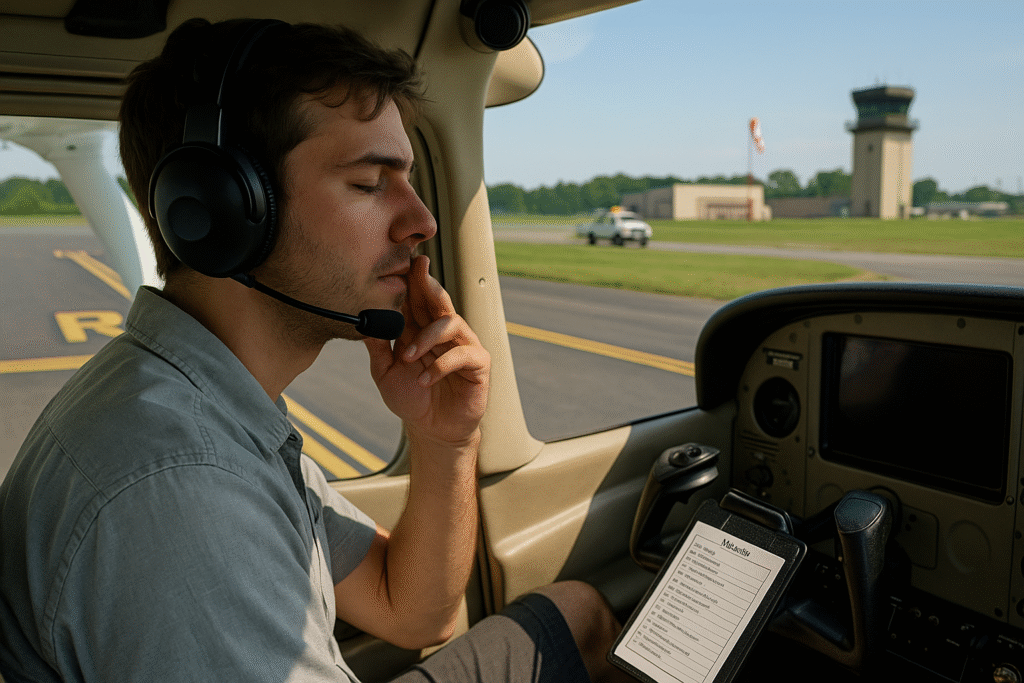
FAQs
Is fear a sign I shouldn’t solo?
Not by itself. Fear means you care. If you and your CFI can’t articulate clear gates, or you keep busting personal minima or stabilized approach criteria, train a bit more and try again on a calmer day.
How many hours before solo?
There’s no magic number. You solo when you consistently meet the standards in §61.87 and your CFI endorses you.
Should I tell ATC I’m a student?
Yes. “Student pilot” helps controllers pace instructions and look out for you.
What if I bounce the first landing?
Hold the picture, maintain centerline and wings level, and let it settle—or add power and go around. A good go-around is a pro move.
References & further study (authoritative)
- FAA Airplane Flying Handbook (AFH): traffic patterns, landings, go-arounds
https://www.faa.gov/regulations_policies/handbooks_manuals/aviation/airplane_flying_handbook - Pilot’s Handbook of Aeronautical Knowledge (PHAK): IMSAFE, risk management
https://www.faa.gov/regulations_policies/handbooks_manuals/aviation/pilot_handbook - 14 CFR §61.87 (Solo requirements)
https://www.ecfr.gov/current/title-14/chapter-I/subchapter-D/part-61/subpart-C/section-61.87 - AOPA Learn to Fly (student resources)
https://www.aopa.org/training-and-safety/learn-to-fly - FAA Safety Team (seminars/webinars)
https://www.faasafety.gov/
